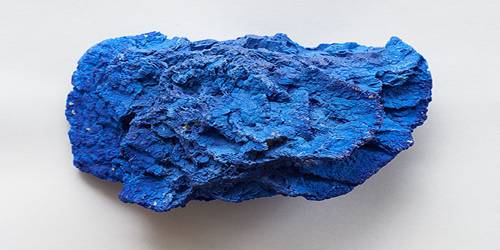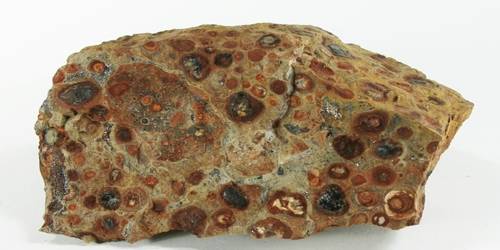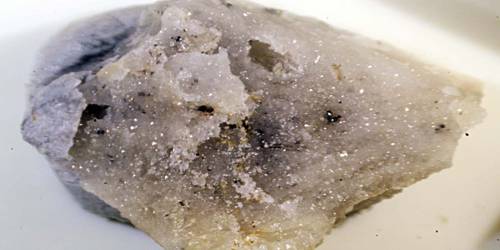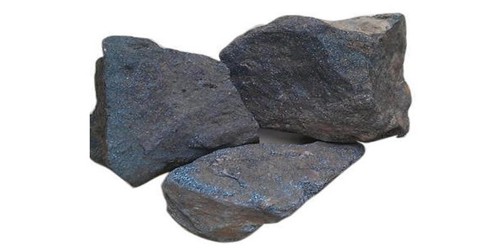Azurite is a copper carbonate hydroxide mineral with a chemical composition of Cu3(CO3)2(OH)2. It is a soft, deep blue copper mineral produced by weathering of copper ore deposits. It is best known for its characteristic deep blue to violet-blue color.
IIt is a carbonate mineral and produces a slight effervescence with dilute hydrochloric acid, producing a light blue liquid. Azurite produces a light blue streak on unglazed porcelain. It is a very popular mineral because of its unparalleled color, a deep blue called “azure”, hence its name. It is also known as Chessylite after the type locality at Chessy-les-Mines near Lyon, France. The blue of azurite is exceptionally deep and clear, and for that reason, the mineral has tended to be associated since antiquity with the deep blue color of low-humidity desert and winter skies.
General Information
- Category: Carbonate mineral
- Formula: Cu3(CO3)2(OH)2
- Crystal system: Monoclinic
- Crystal class: Prismatic (2/m).

Properties
Azurite is not a common or abundant mineral, but it is beautiful and its blue color attracts attention. It has been used by people in many parts of the world for thousands of years. Ancient people used it as an ore of copper, as a pigment, as a gemstone, and as an ornamental stone. It is still used for all of these purposes today.
- Formula mass: 344.67 g/mol
- Color: Azure-blue, Berlin blue, very dark to pale blue; pale blue in transmitted light
- Crystal habit: Massive, prismatic, stalactitic, tabular
- Cleavage: Perfect on {011}, fair on {100}, poor on {110}
- Fracture: Conchoidal
- Tenacity: brittle
- Mohs scale hardness: 3.5 to 4
- Luster: Vitreous
- Streak: Light blue
- Diaphaneity: Transparent to translucent
- Specific gravity: 3.773 (measured), 3.78 (calculated).
Occurrence
Azurite often occurs with green Malachite, which may form green stains or specks on Azurite crystals or aggregates. The two minerals sometimes occur admixed or banded together, forming what is called “Azure-malachite” in the gem and mineral trades. A rarer Azurite mixture, known as “Bluebird”, is Azurite mixed with dark red Cuprite. Azurite, “Azure-malachite”, and “Bluebird” all have gem uses.
Sometimes, only part of the Azurite is altered to Malachite, while the other part remains as Azurite. Such specimens are green on one end and blue on the other.
Information Source:
















